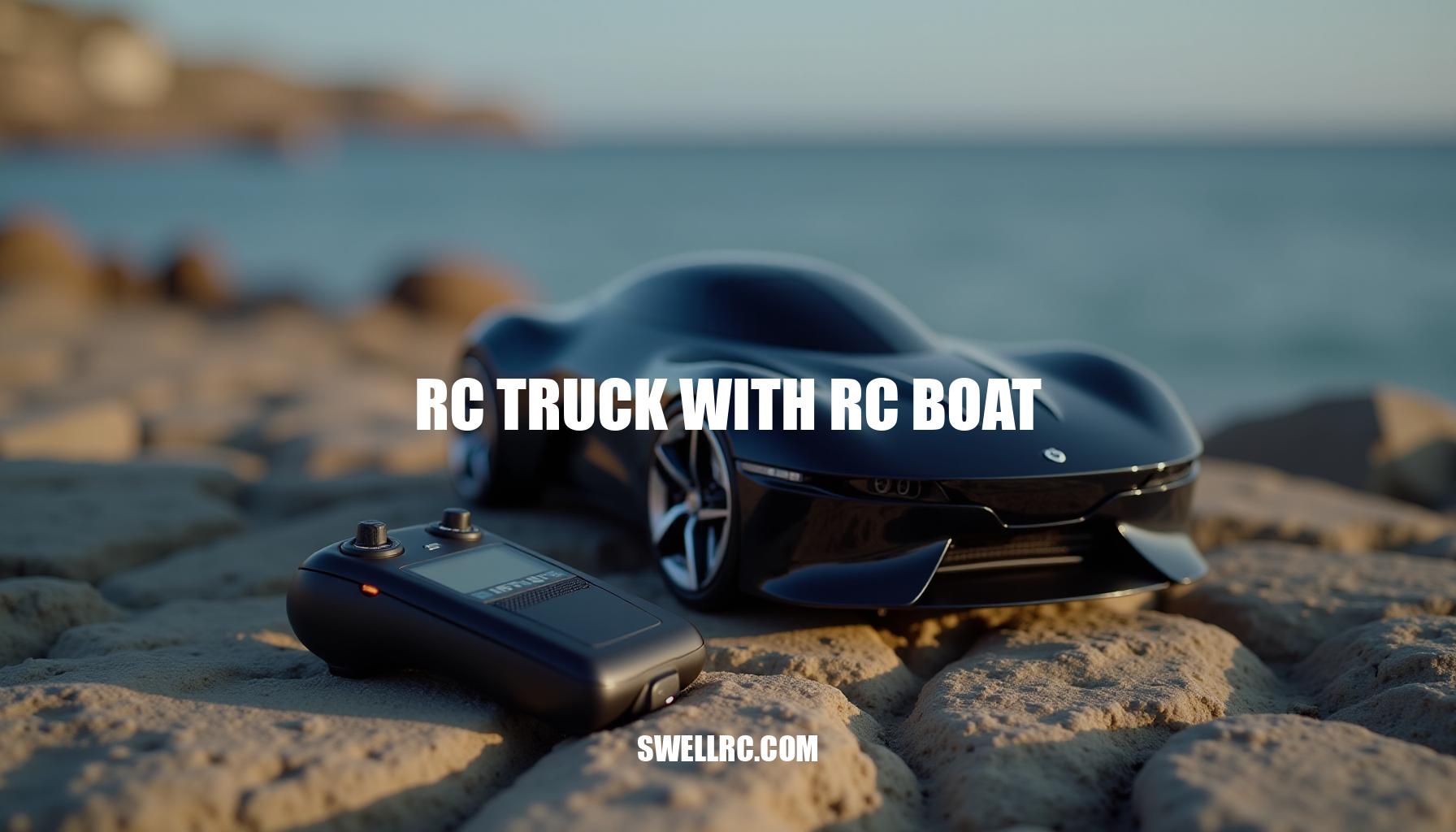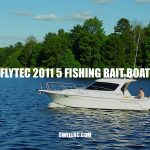Mastering RC Truck with RC Boat: Tips, Tricks, and Expert Advice
I still grin thinking about the morning I backed a waterproof 4×4 down a sandy ramp, tiny trailer wobbling, and nudged my hull into the lake—then swapped controllers and carved a stainless S across the water. That was my first real taste of running an RC truck with RC boat as a true duo, and it hooked me instantly. Land grips.
Water slips. Mastering both at once feels like playing two instruments in harmony. The truck handles the approach, launch, and retrieval; the boat delivers the speed, spray, and open-water chess match with wind and chop.
Together, they’re not a novelty—they’re a strategy playground.
You start to think in sync: timing battery swaps, reading shorelines as launch ramps, and coordinating recovery if the boat flips. If you’re just gearing up for dual-terrain play, rugged off-road RC trucks with sealed electronics make life way easier; a buyer’s guide like this roundup of waterproof RC gear off-road favorites helped me choose a shore-ready rig: https://www.swellrc.com/best-rc-trucks-4×4-off-road-waterproof/
The best part? The laughs.
The little oops moments. And the split-second decisions when a wake rolls in and your truck needs to bail out your boat. That’s where the RC hobby comes alive.
Whether you’re into remote control models, high-speed RC boats, or beach RC driving with seamless water-to-land transitions, blending these vehicles creates an unforgettable experience that pushes skill and fun to the next level.
Why Combine RC Truck and RC Boat – The Hobbyist’s Dream Setup
Pairing an RC truck and boat goes beyond mere stunt value—it’s about achieving true synergy within the RC hobby culture. The truck handles the demanding shore tasks: towing a miniature trailer, launching and retrieving the boat, transporting spare batteries, and even carrying a small action cam. Meanwhile, the boat capitalizes on open water space, speed, and currents.
Though the mechanics differ—traction in trucks versus hydrodynamics in boats—the overlapping batteries, radio technology, and maintenance techniques make this combo surprisingly practical and beloved by RC communities.
For enthusiasts looking to optimize their setup, key considerations include:
- Waterproofing: Use sealed receivers and ESCs, protect servo horns, and grease bearings for waterproof RC trucks; ensure proper hatch seals and flotation for high-speed RC boats.
- Battery management: Implement parallel packs or staggered drives so your shore vehicle can always haul the boat home with sufficient power.
- Control range: Lakes tempt owners to drive or sail farther, so selecting radios with reliable range and choosing boats designed for distance is critical. For those prioritizing range, this overview on pushing distance safely is invaluable.
| Aspect | Truck Edge | Boat Edge | Challenge | Quick Fix |
|---|---|---|---|---|
| Traction/Grip | Climbs ramps, hauls gear | Skims chop at speed | Sand and wet algae are slick | Use paddle tires or all-terrains; bring a traction mat |
| Water Resistance | Waterproof receivers/ESCs | Sealed hatches, self-righting | Splash and submersion risk at shore | Conformal coat, drain holes, and dielectric grease |
| Range/Signal | Stable on land, easy line-of-sight | Wide open water invites distance | Signal reflections over water | Tall antenna mount; choose radios with robust FHSS/DSM protocols |
| Transmitter Sharing | Multi-model memory radios | Same radio can bind to both | Wrong model memory selected | Label model memories; fail-safe test before launch |
| Retrieval/Recovery | Can tow a line or push boat | Boats can tow a recovery line | Cross-surf at the shoreline | Practice shallow approaches; pre-rig tow lines |
Through collaboration and experimentation, various RC communities have innovated combination setups: some run recovery rigs that rely on a truck-and-boat tag team, while others construct detailed scale scenes featuring functional ramps and dollies. By paying close attention to traction, water resistance, battery longevity, control range, and transmitter compatibility, you can enhance your dual RC experience, ensuring both reliability and fun.
Recommended Models and Gear Combinations
When looking for the best RC boat to pair with an RC truck, it’s crucial to consider both performance and compatibility, especially if you’re aiming for an exciting shore rig setup. High-speed RC boats like the Traxxas M41 Snap-On offer big-water confidence with blistering speed and excellent tracking that smooths out white-knuckle moments. For those just starting, entry-level RC boats such as the Gizmovine RC Boat T03 and Toyabi RC Boat T03 provide quick planes and forgiving handling, making them perfect for park ponds and first-time launches.
On the other end of the spectrum, performance-focused models like the Aquacraft UL-1 Superior deliver serious pace and crisp response, rewarding clean water conditions and precise throttle control. If you’re into creative projects, the Lego Technic RC Boat offers unparalleled modularity, ideal for builders who enjoy tinkering as much as running their boats.
When pairing these boats with off-road RC trucks, choosing waterproof RC trucks with sealed electronics, metal drivetrains where it counts, and tires designed to bite on damp ramps is essential. This avoids the notorious “soggy servo” blues. A reliable multi-model RC boat transmitter that supports model compatibility ensures you can bind the same handset to both boat and truck, seamlessly switching between model memories and benefiting from excellent failsafes.
Here’s a mini feature comparison at a glance to help you match your RC boats with the right trucks and environments, along with performance impressions:
| Model | Type | What Stood Out | Ideal Pairing |
|---|---|---|---|
| Traxxas M41 Snap-On | Speed V-hull | High-speed stability and tracking | Big lakes + powerful 4×4 truck |
| Gizmovine RC Boat T03 | Budget racer | Quick plane, easy recovery | Park ponds + compact truck |
| Toyabi RC Boat T03 | Starter-friendly | Forgiving handling | First launches + short boat ramps |
| Aquacraft UL-1 Superior | Performance hydro | Serious pace, crisp response | Calm water days + high-traction truck |
| Lego Technic RC Boat | Modular builder | Customizable, educational | Creative builds + scale truck scenes |
By selecting the right combination of high-quality boats and waterproof 4×4 trucks, along with a versatile RC boat transmitter ensuring flawless model compatibility, you’ll enjoy an exhilarating and reliable shore rig experience that suits your preferences and beginner to advanced skill levels.
How to Set Up and Sync RC Truck with RC Boat
Here’s the setup I wish I’d had on day one—simple, reliable, and repeatable for those wondering how to make RC truck and RC boat share the same transmitter effectively. First, choose your transmitter setup wisely by using a multi-model memory transmitter, allowing one handset to control both vehicles (though not simultaneously). Create separate model profiles clearly labeled “Truck” and “Boat” to keep things organized, and set failsafe options to throttle neutral and steering centered on both models to avoid mishaps.
Next, focus on ESC calibration and binding per model: calibrate the ESC throttle endpoints on the truck and adjust the steering EPA to prevent servo over-stress at full lock.
For the boat, calibrate both throttle and rudder precisely, and if your ESC supports it, confirm reverse lockout settings to ensure safety and smooth operation.
Managing frequency and interference is essential, so stick with modern 2.4 GHz spread spectrum technology. Keep antennas positioned optimally—above the waterline on the boat and elevated on the truck using a simple zip-tie mast—to maintain signal integrity. Always perform a range test before heading to any new site to verify reliable control.
When it comes to waterproofing, commit fully: for the truck, apply a conformal coat to the receiver, grease all bearings, and seal body openings with a light bead of sealant.
For the boat, check hatch tape seals, add foam flotation for safety, and lightly grease the shaft tube. A small sachet of desiccant tucked under the hatch can protect electronics from spray and moisture intrusion.
Launch tactics matter, too. Back the truck down slowly onto the ramp and use a slip mat if the surface is slippery.
Angle the boat slightly into the wind before release to prevent immediate drifting, and keep the truck staged just above the splash zone to facilitate quick shoreline retrieval.
For those interested in entry-level RC boats and practice options, start with budget pond-runners to build confidence without getting soaked. Helpful overviews like RC Boat Harbor Freight and Harbor Freight RC Boat provide accessible guidance for first launches and simple retrieval drills.
Quick checklist before each outing:
- Charged battery packs clearly labeled “Truck” and “Boat”
- Model memory selected correctly on the transmitter
- Failsafes tested both on land and at shallow water
- Hatch seals checked and taped; receiver box securely closed
- Tow line or recovery plan prepared
- Tool roll, hatch tape, spare propellers, and a dry towel ready
Real-World Testing – What Happens When Land Meets Water
Field testing with various surfaces reveals the true capabilities of these RC boats and trucks, highlighting their exceptional durability and performance. On grass, the truck just works seamlessly—turning the trailer is easy, allowing you to pivot into the perfect launch angle with confidence. Transitioning to sand introduces challenges; mastering sand traction becomes key as maintaining momentum prevents the trailer from bogging down.
The water-to-land transitions at the shoreline demand precise timing. Successful shallow-water launches rely on releasing the boat just before a mini wave laps in and easing the truck up the ramp carefully to avoid a wet bumper—practices that enhance the overall RC realism and scale launching authenticity.
Once on the water, it’s a sensory overload in the best possible way. Operating the Aquacraft UL-1 Superior across morning glass feels like flying a wing, providing smooth and stable performance impressions. Switching to the Lego Technic RC Boat transforms the experience into a creative experiment where hull tweaks made the night before manifest in real-time handling differences.
During one glorious mishap, a sudden cross-breeze spun my hull mid-launch. Thanks to the Gizmovine T03’s nimble throttle control, I recovered quickly—though not before earning a sandy shoe and a hearty laugh. This unexpected moment is the true beauty of the combo: the unplanned stories that make each field test unforgettable.
Common Challenges & How to Overcome Them
Many enthusiasts face specific challenges on their first dual-terrain day, particularly when operating RC boats and trucks simultaneously. One common issue is signal interference over water, as water surfaces can both reflect and absorb RF signals. To counteract this, position your boat’s antenna high under the canopy and your truck’s antenna above the cab.
Conduct a walk-away range test to maintain clear control range with uninterrupted line-of-sight. When aiming for extended ranges, it’s essential to research long-range RC boats best practices and select the best RC transmitter for boats that complements your model’s design and radio capabilities.
Another frequent problem is range disconnects when approaching the edge of signal reach. To prevent losing control, program a failsafe to neutral and gently steer your model back toward shore before hitting your known limit.
Opt for radios that support robust multi-model memory and strong link protocols, aiding in troubleshooting and ensuring a reliable connection.
Overheating is a critical concern, especially on boats that often run at near-constant RPM. Selecting the correct prop size and monitoring temperatures after short 2–3 minute passes helps avoid damage. Trucks require receiver boxes that are breathable yet splash-resistant; be sure to add vent holes above the waterline, never below, to maintain proper waterproofing.
Many waterproofing fails originate from hatch tape or grommets, so replace tape after every session and routinely inspect grommets where servos or flex shafts pass through.
Launching and retrieval can also be tricky on slippery ramps. Having a portable traction mat or a small carpet piece handy improves footing, while paddle tires enhance performance on soft sand beaches. Developing good retrieval techniques by practicing in ankle-deep water before venturing onto larger lakes is invaluable.
- Label and color-code your model memories on the transmitter for quick access.
- Always pack a recovery line and a lightweight float buoy for emergencies.
- Bring spare hatch tape and a small prop/hex tool set to address quick fixes.
- Standardize connectors (such as XT60 or EC5) across both truck and boat to simplify charging and maintenance.
- Time your runs with short passes followed by quick cooldowns to prevent overheating.
- Practice retrievals in shallow water to build confidence before larger excursions.
Conclusion: Why the RC Truck & Boat Duo is Worth Every Minute
If you’re already immersed in the RC lifestyle, combining an rc truck with rc boat elevates a casual outing into an epic expedition. Embracing a dual-terrain setup changes the way you engage with your hobby, turning every session into a strategic challenge and pure fun.
Think of yourself as part of a shoreline pit crew, where every move counts. Here are a few key tips to enhance your experience:
- Swap packs with the truck staged: Always have fresh batteries ready to maximize run time across both vehicles.
- Launch with intent: Plan your route for both land and water, so you make the most of each environment.
- Let the boat stretch its legs: On open water, let the boat explore the horizon to truly test its limits.
The Traxxas M41 taught me invaluable lessons in performance and play, emphasizing speed and precise tracking that challenge my driving skills. Meanwhile, the Lego Technic RC Boat reminded me that building is half the joy—a fundamental part of growing confidence and connection to the hobby.
Running both vehicles together has not only deepened my appreciation for each but also accelerated my hobby growth. Start simple, plan your retrievals carefully, and gradually invest in gear tailored to your preferred water and terrain environments. This careful progression builds buying confidence and ensures a rewarding RC experience.
Often, the most memorable RC adventures are sparked just at the edge of water, where land and sea merge into your playground. Embrace shoreline tactics and let your dual-terrain setup bring new dimensions of excitement to your RC pursuits.
Frequently Asked Questions
- Can one transmitter control both RC truck and RC boat?
Yes—use a multi-model memory 2.4 GHz transmitter. Bind the truck and the boat separately, create distinct model profiles (Truck and Boat), and switch profiles on the radio before running each vehicle. Always confirm failsafe and endpoints after switching. - Are RC trucks waterproof enough for boat launching?
Many are. Look for sealed receiver boxes, waterproof servos/ESCs, and good gasketed access points. Add conformal coating and dielectric grease as extra insurance, and keep the truck above the active splash zone when retrieving. - What’s the best RC boat for pairing with an off-road truck?
It depends on your water and goals. For big-lake speed and stability, the Traxxas M41 is a favorite. For budget-friendly pond days, starter boats like the Gizmovine T03 or Toyabi T03 pair well with compact 4×4 trucks. Performance seekers can consider the Aquacraft UL-1. - How far can a long-range RC boat operate compared to trucks?
Boats can safely run hundreds of meters with the right radio and setup, often farther than you’d comfortably drive a truck on land due to terrain and obstacles. Range depends on radio link quality, antenna placement, and water conditions—always test gradually. - Which RC models are ideal for water-to-land transitions?
Choose a waterproof 4×4 truck with good low-speed control for ramps and sand, and a boat with reliable sealing and self-righting or stable handling. Pairing a grippy truck with a stable V-hull or a forgiving beginner hull makes launches and recoveries smooth.



